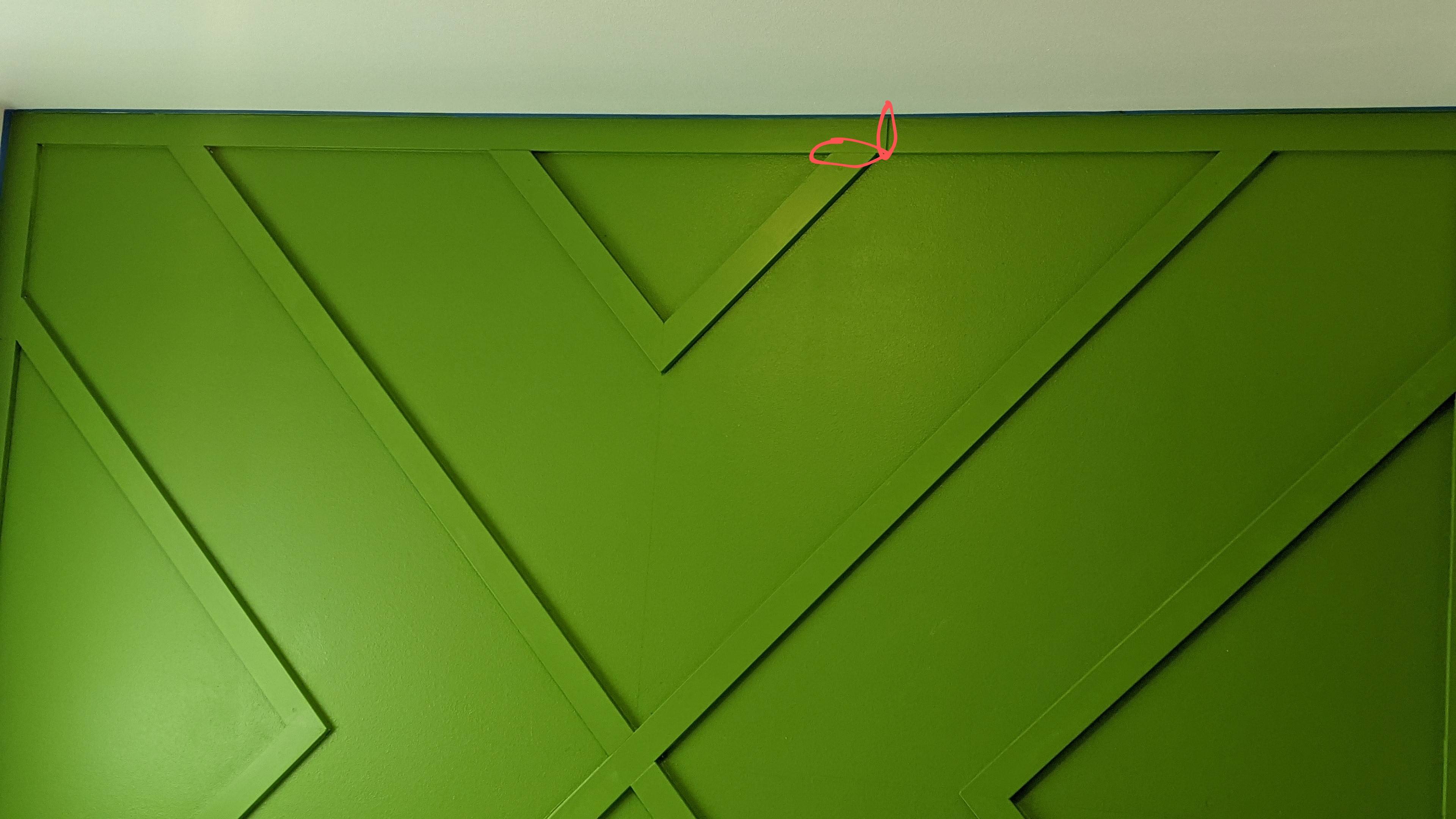I would sand the horizontal trim at the top down until it meets the diagonal trim. You'll want to extend the sanding horizontally to make a smooth transition from "full thickness" at the good joint to the left to "reduced thickness" where these two pieces meet. This will help hide the difference in thickness.
Once that's done, I would sand the paint off the horizontal trim to the right of the big gap (which will now be much thinner) for 6-12" to the right, then build it up with thin layers of wood filler to make a smooth transition up to the joint where the current mismatch is.
You'll end up with your thickest piece of horizontal trim at the left end of the "V", then a gradual thinning to the right end of the "V" (due to the initial sanding), and a further thinning to a point mid-way or so to the next diagonal piece (due to the wood filler). By making the transitions slowly over many inches, they will be very difficult to notice by eye.
Once you've got it nice, smooth and matching to your satisfaction, clean up all the sawdust and repaint according to your original paint schedule.



need to fill in the space and feather, how to do this? wood filler + sanding? Or is there some other better way?